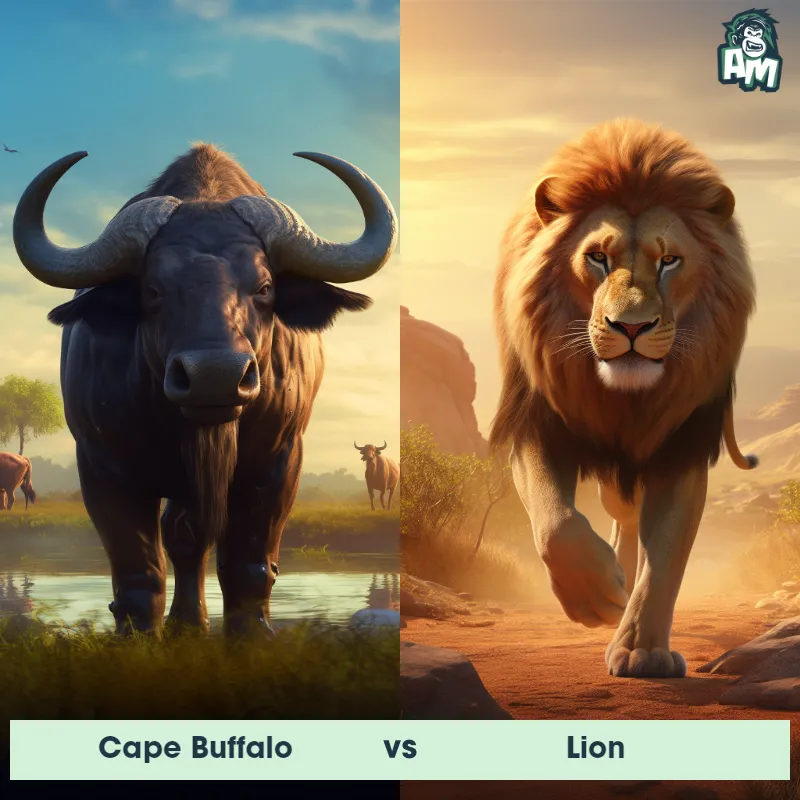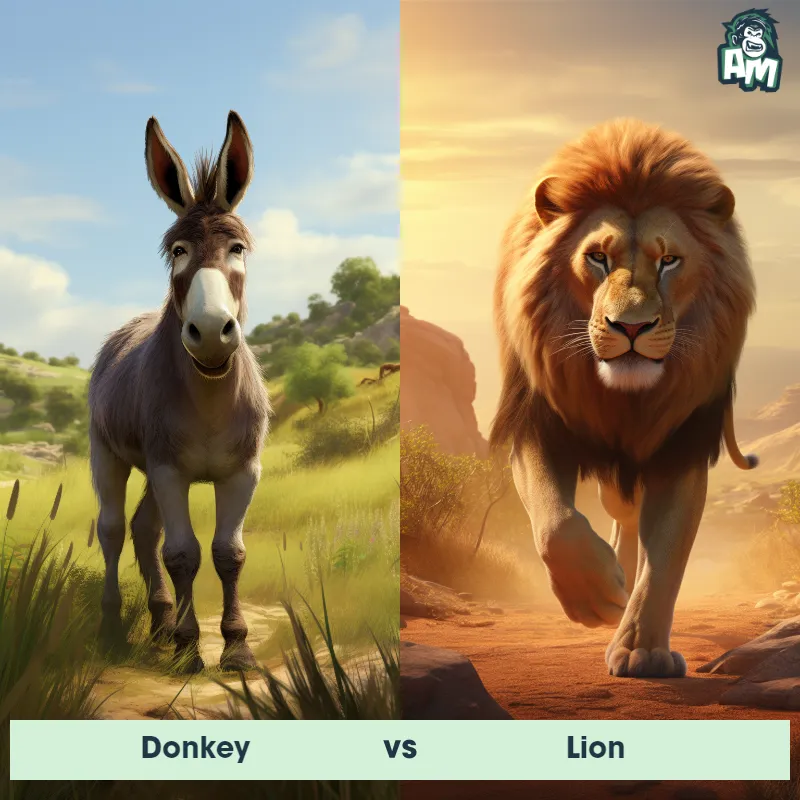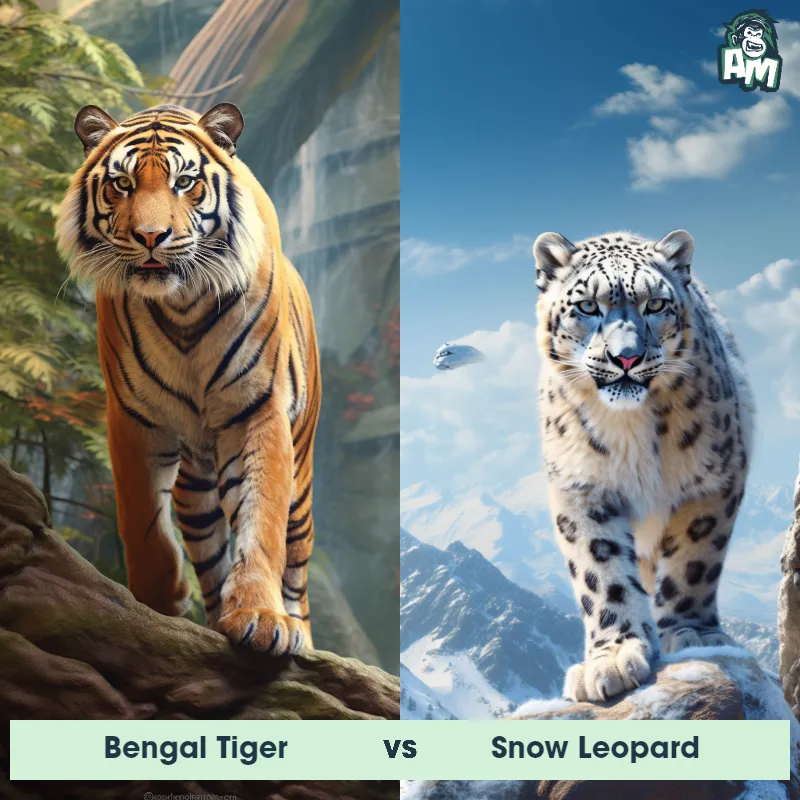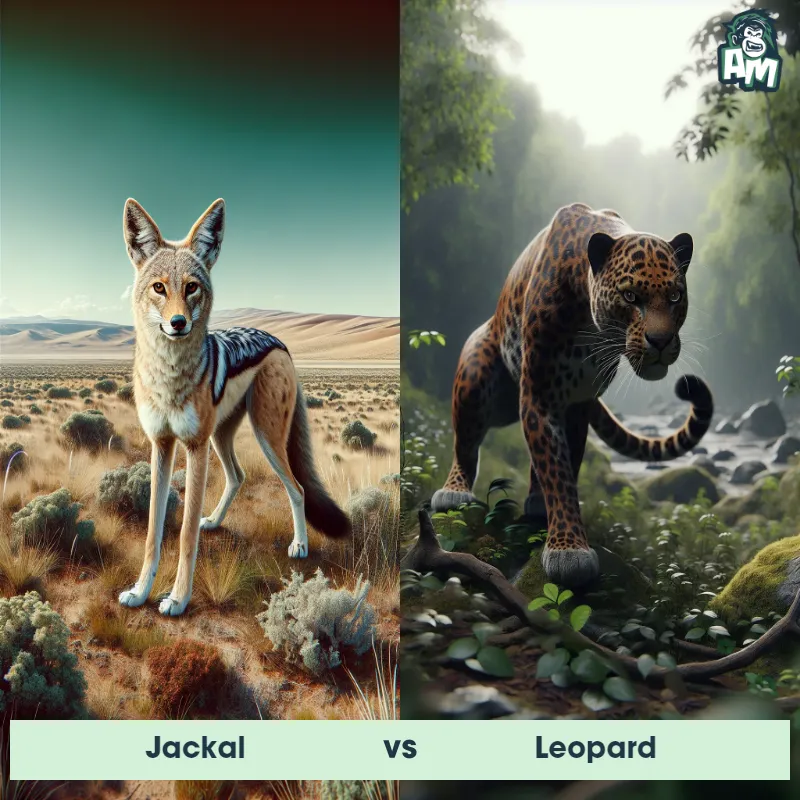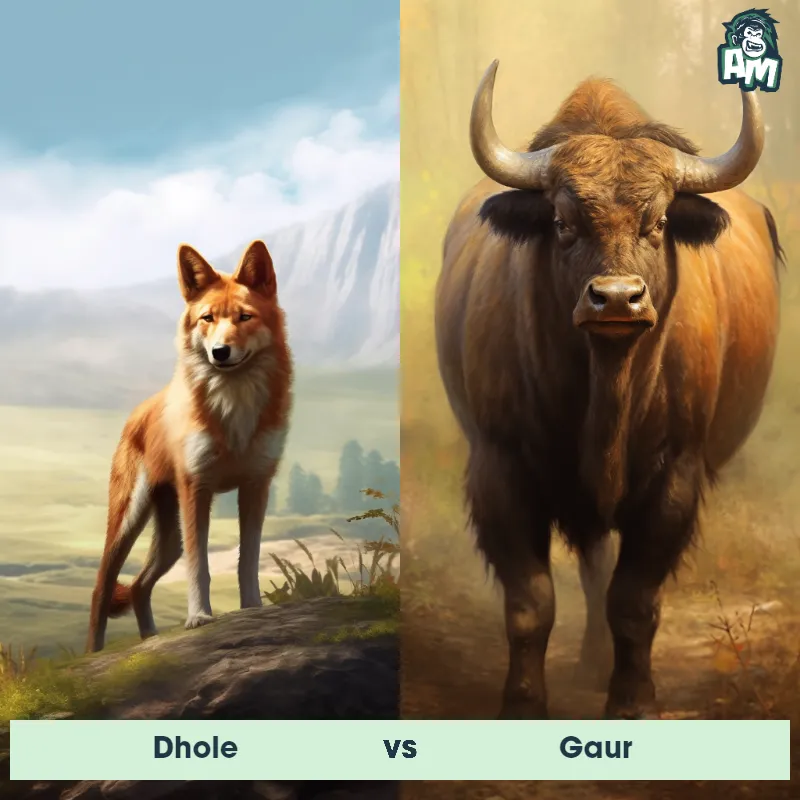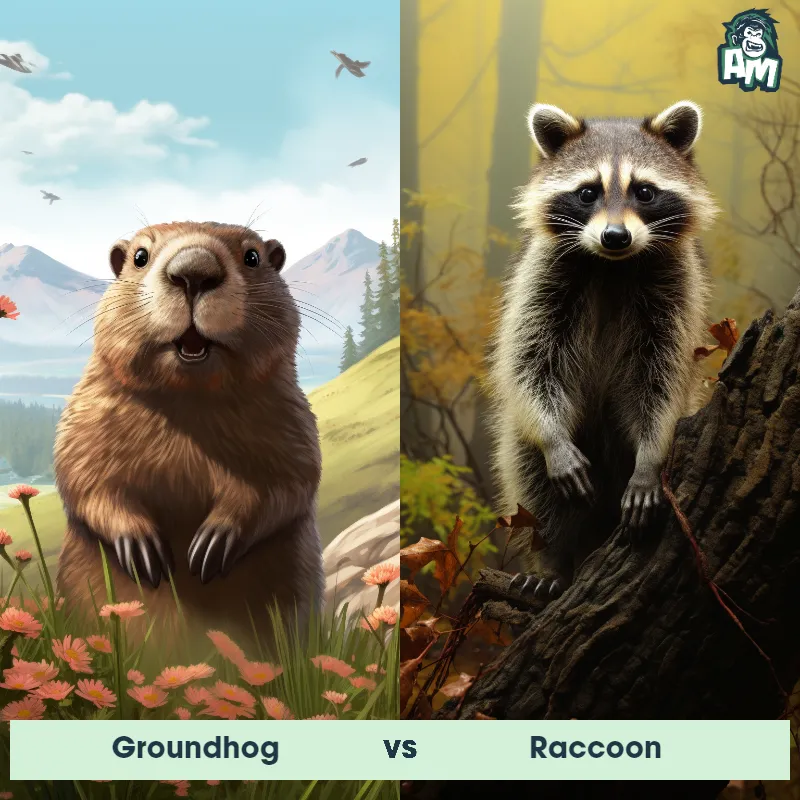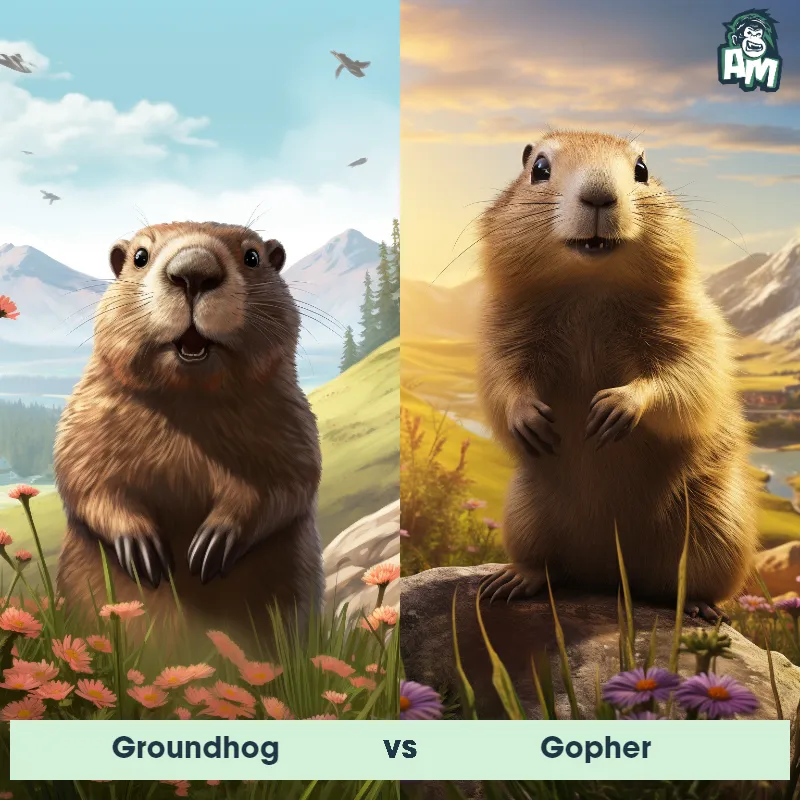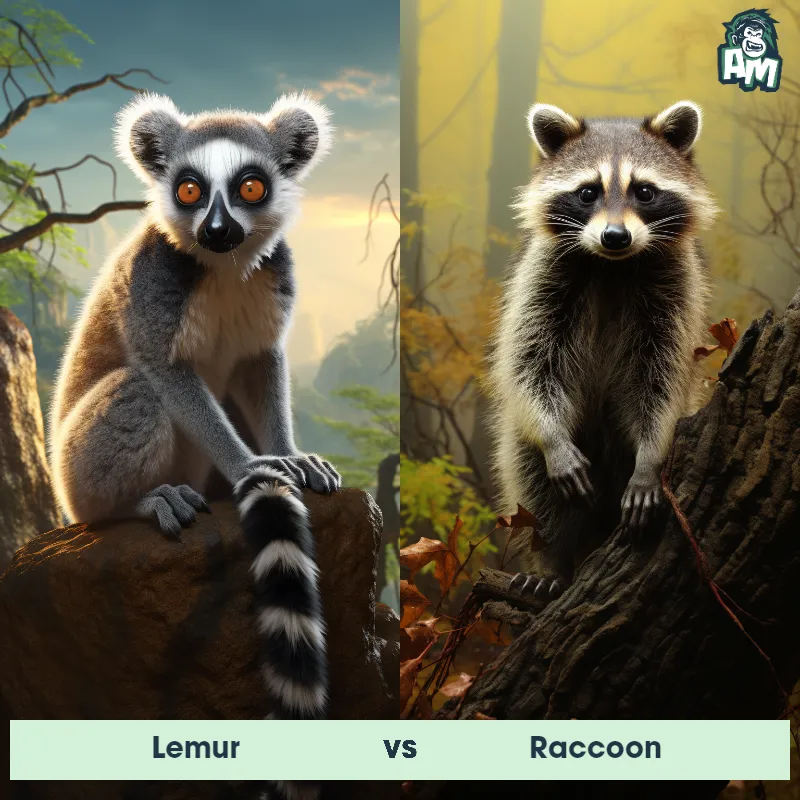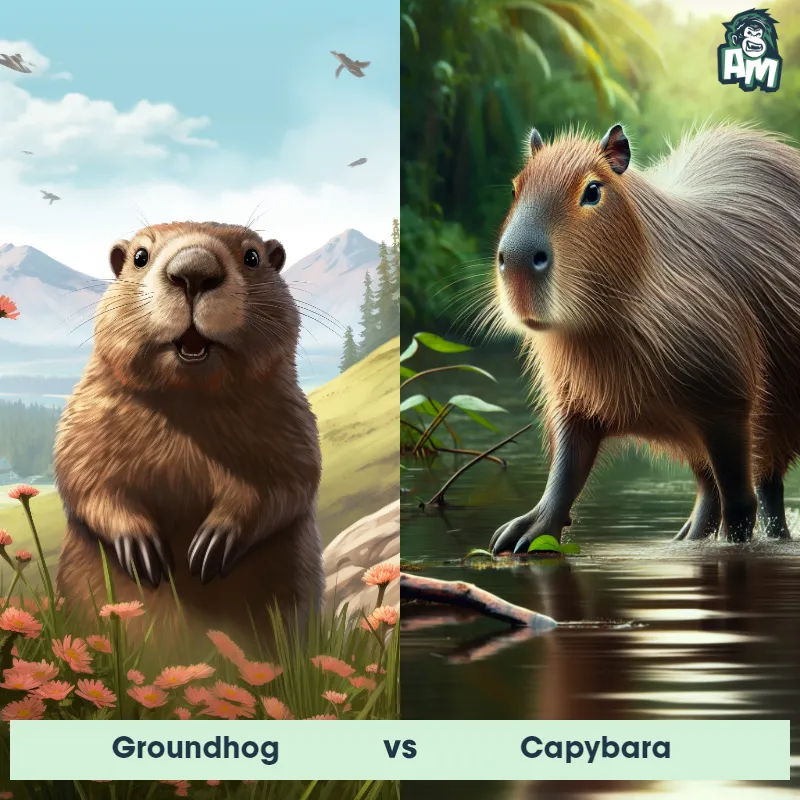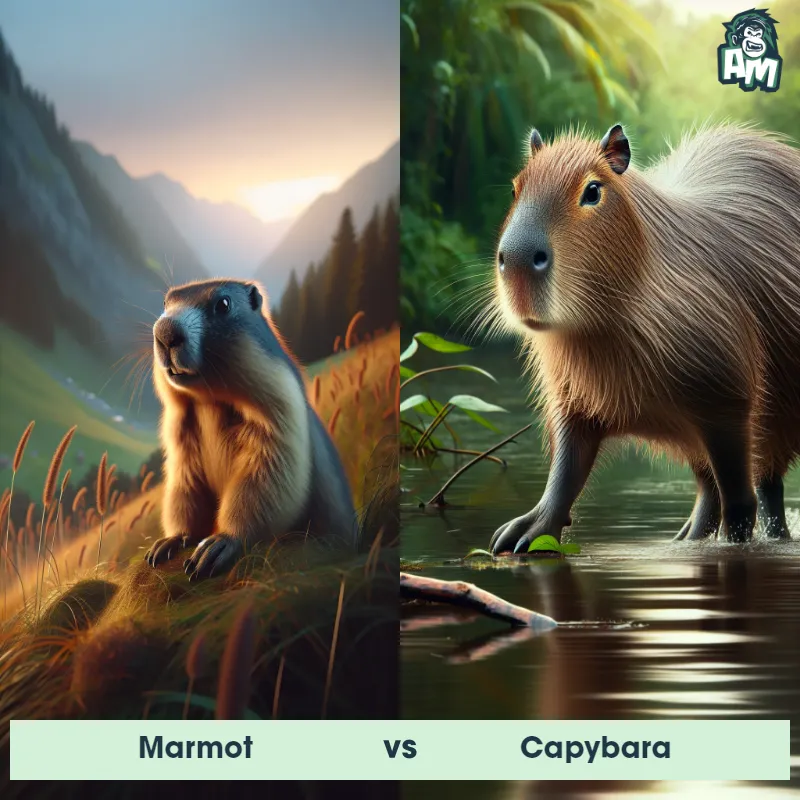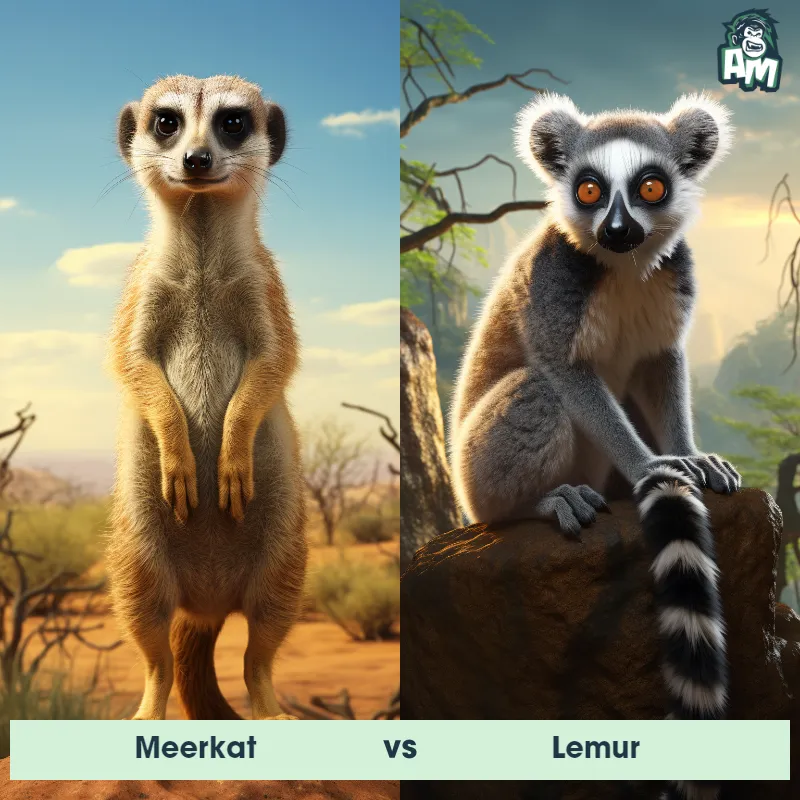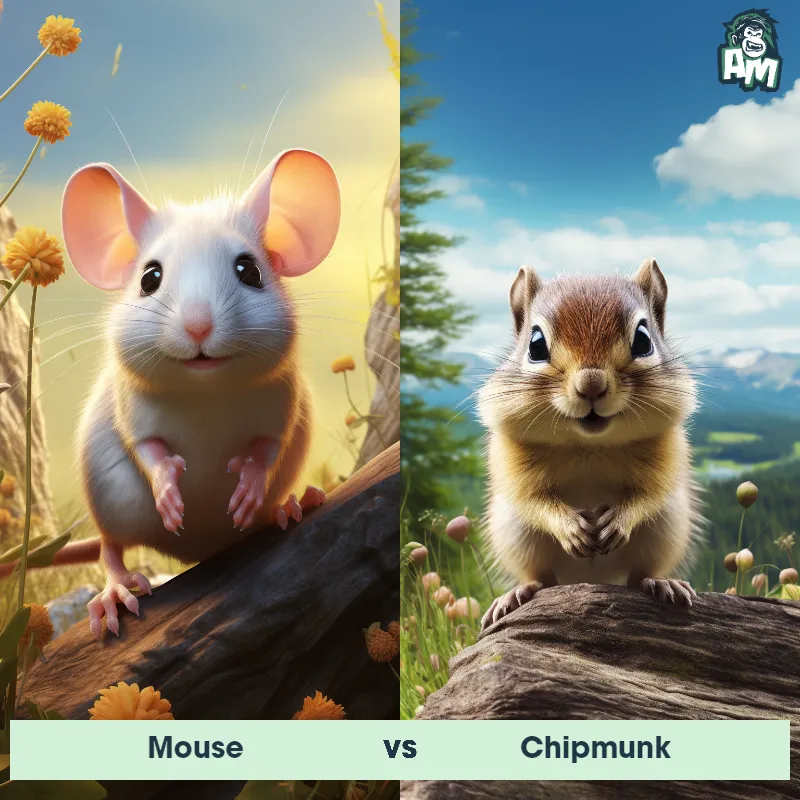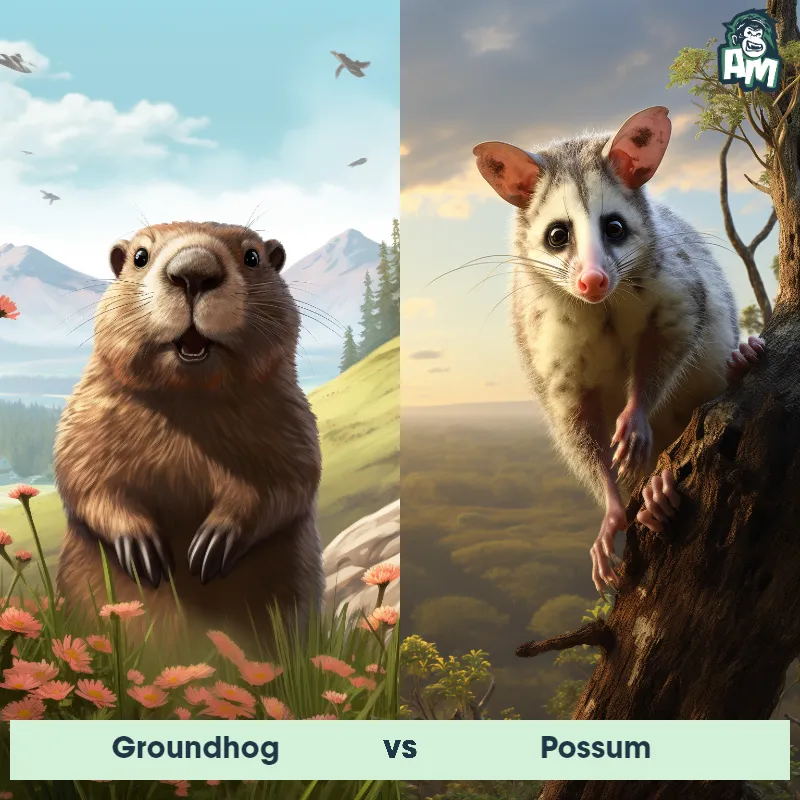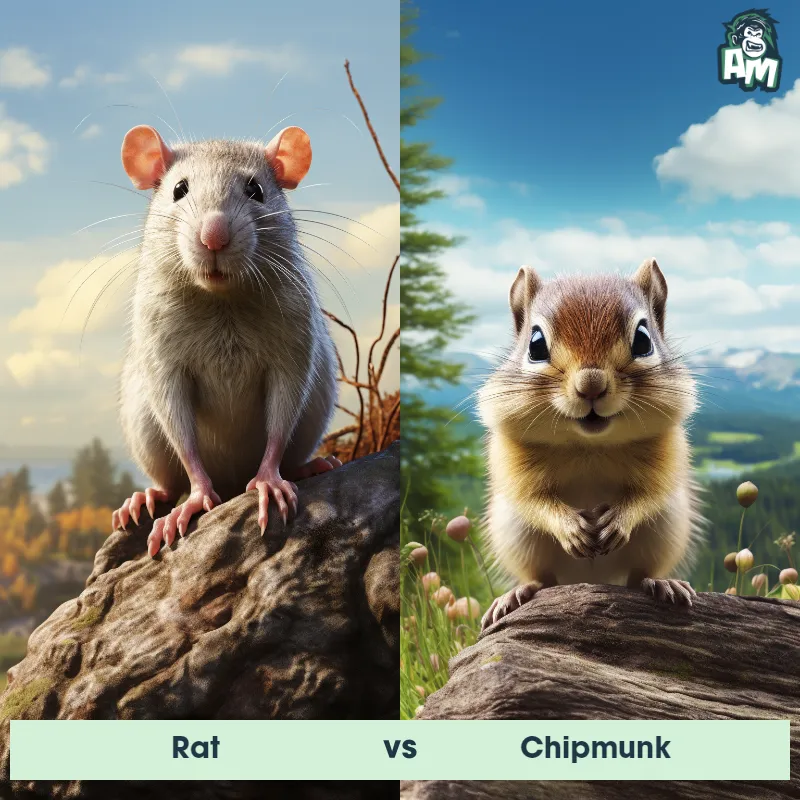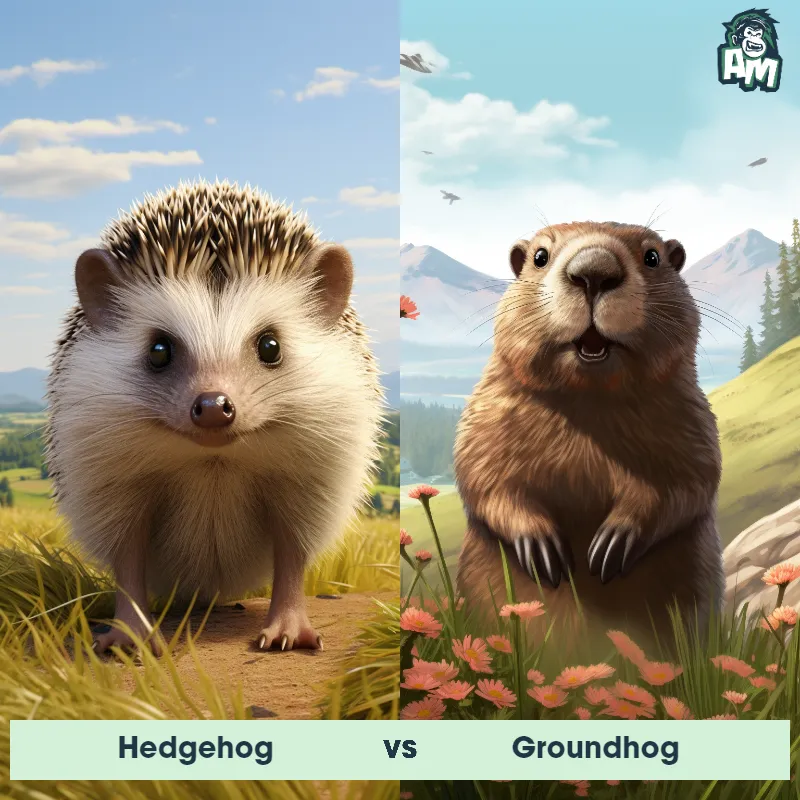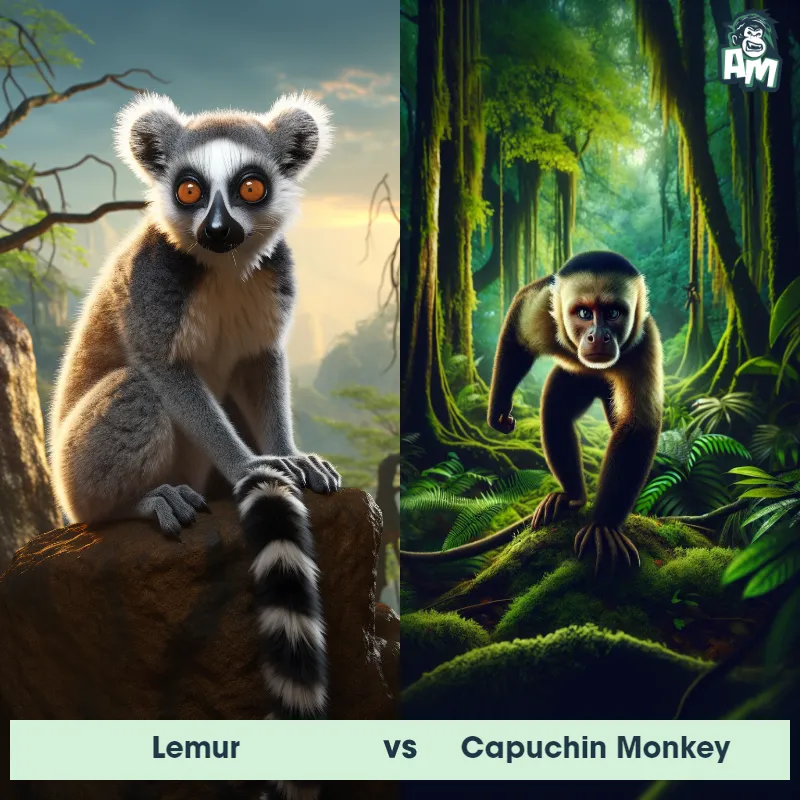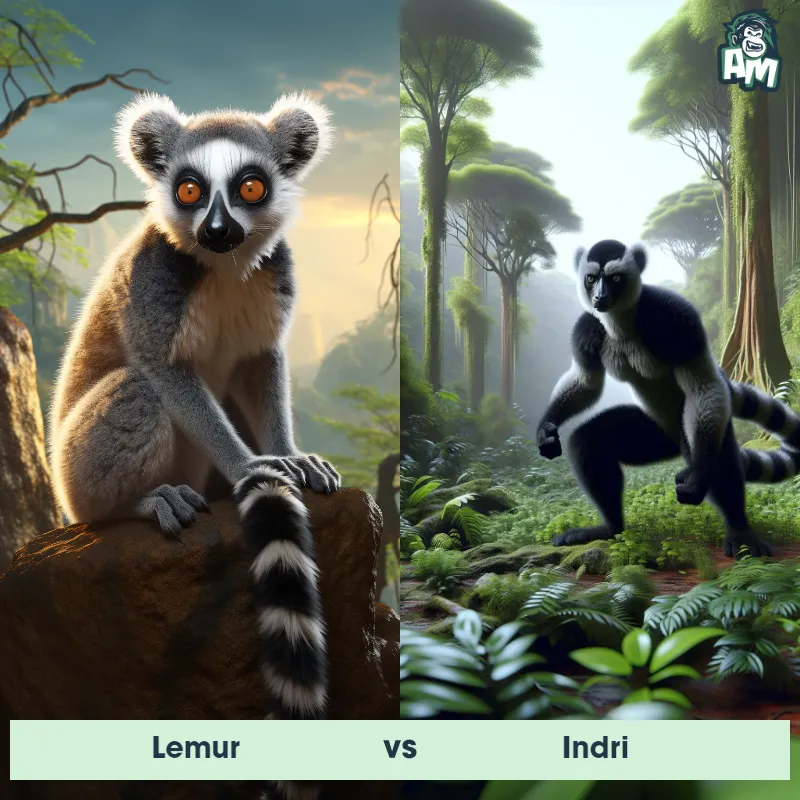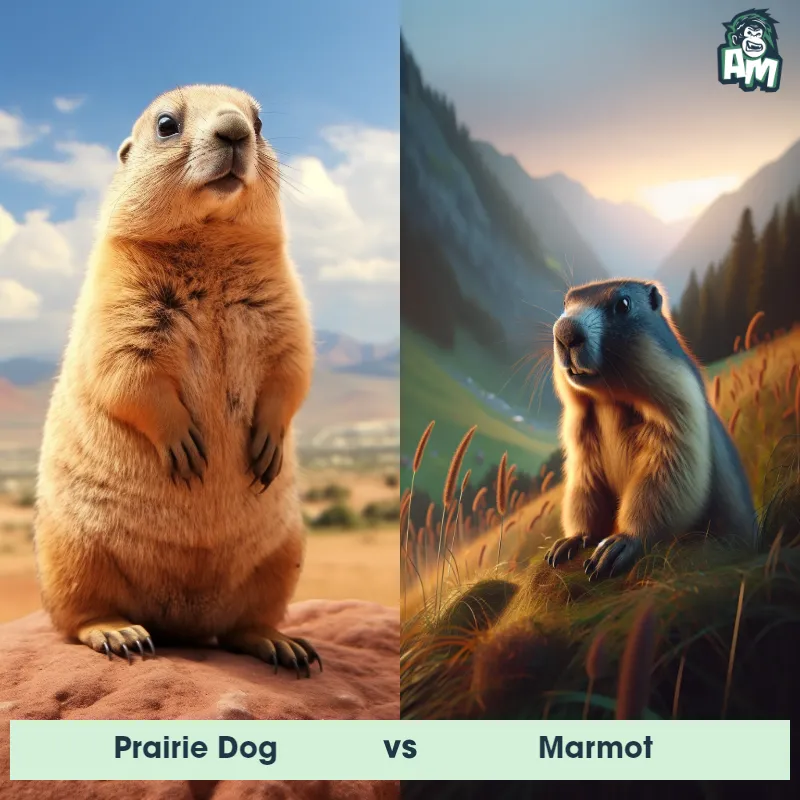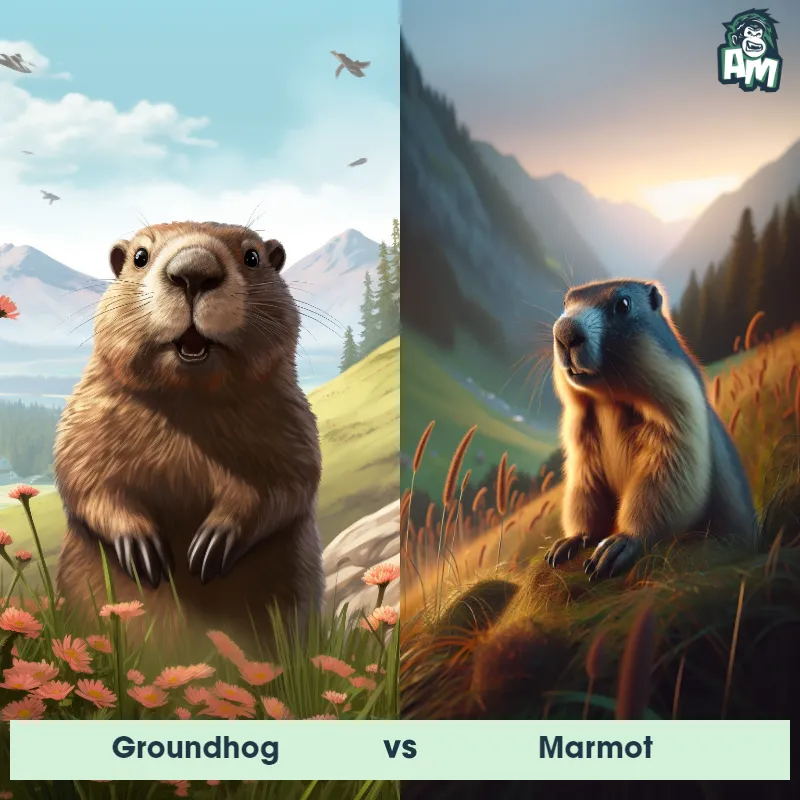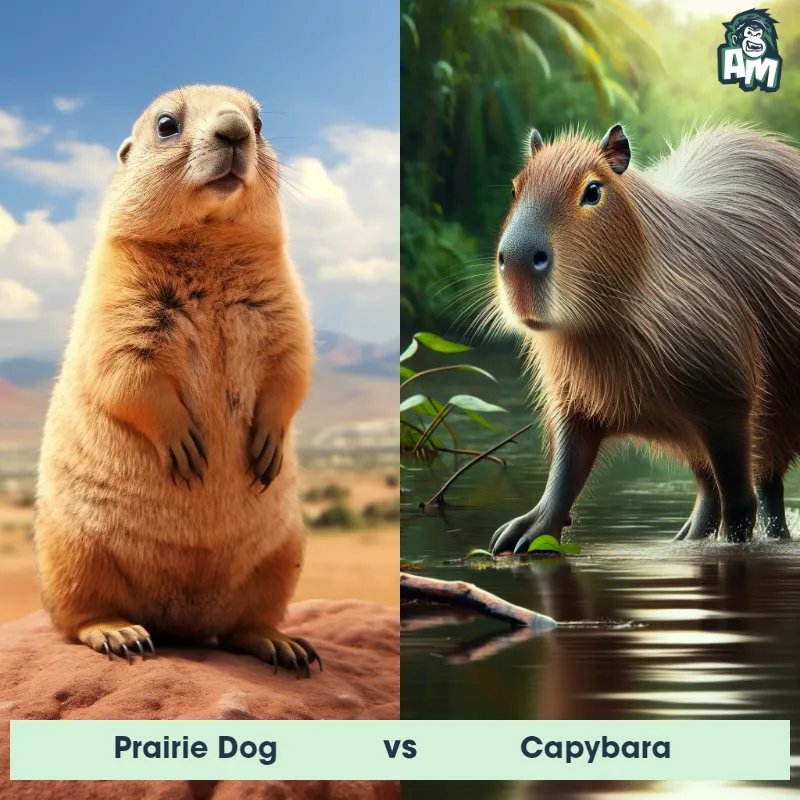Lemur vs MarmotSee Who Wins

Welcome, ladies and gentlemen, to this thrilling three-round matchup between a Lemur and a Marmot. We've got two agile and determined opponents ready to show off their skills here today. It's going to be a wild battle between these two fascinating creatures. So, let's jump right into the action and see who comes out on top!
Contender 1: Lemur
The Lemur is a type of primate known as a prosimian, native to the island of Madagascar. Lemurs come in various sizes and colors, but they are typically characterized by a pointed snout, large eyes, and a long tail that can be longer than their body. Many lemur species have a thick and woolly fur that ranges in color from reddish-brown to gray and black. Lemurs are arboreal animals, spending most of their time in trees, and their diet consists of fruits, leaves, flowers, and insects.
Fun Fact: Lemurs communicate with each other using a variety of vocalizations, body postures, and scent markings, exhibiting a complex and intriguing social structure.
Contender 2: Marmot
The Marmot, also known as a groundhog or woodchuck, is a medium-sized rodent belonging to the squirrel family. It is characterized by its stout body, short legs, and bushy tail. Marmots have a short, coarse fur that can vary in color from brown to gray, depending on the species. They are well adapted to an underground lifestyle, with strong claws for digging burrows that can be up to 30 feet long. Marmots are social animals, living in colonies that consist of complex tunnel systems with separate chambers for nesting and hibernating. They are herbivores, feeding primarily on grasses, leaves, and flowers.
Fun Fact: Marmots are excellent diggers and can move up to a ton of soil when constructing their burrows.
Matchup Stats
| Lemur | Marmot | |
|---|---|---|
| Size | Varies by species, 3.5 inches to 2.5 feet (9 cm to 76 cm) | Up to 2 feet long (60 centimeters) |
| Weight | Varies by species, 1 ounce to 20 pounds (30 grams to 9 kg) | Up to 13 pounds (6 kilograms) |
| Speed | 20mph (32km/h) | 20mph (32km/h) |
| Key Strength | Agility and speed | Agility and ability to retreat into burrow |
| Biggest Weakness | Small size and lack of aggressive behavior | Relatively small size and lack of offensive weapons |
Current Votes
Lemur vs Marmot
See Who Wins
View More Matches
Looking For More?
Similar Matches
Scientific Stats
| Lemur | Marmot | |
|---|---|---|
| Scientific Name | Lemuriformes | Marmota |
| Family | Lemuridae | Sciuridae |
| Habitat | Forests and jungles | Mountains and meadows |
| Geography | Madagascar | North America, Europe, Asia |
| Diet | Fruits, leaves, flowers, and insects | Herbivorous, primarily grasses, leaves, and flowers |
| Lifespan | 16 years - 25 years | 6 years - 10 years |
Key Differences between Lemur and Marmot
- Body shape and posture: Lemurs possess a distinctively slender and elongated body shape, with agile limbs and a long tail that helps with balance during arboreal movements. In contrast, Marmots have a more robust and stocky build, with short limbs and a shorter, bushy tail.
- Size: Lemurs are generally smaller than Marmots, with most Lemur species averaging around 14-17 inches in length and weighing between 2-4.5 pounds, whereas Marmots are typically larger, ranging from 18-28 inches in length and weighing between 8-18 pounds.
- Habitat and distribution: Lemurs are naturally found only on the island of Madagascar, occupying various forest types, while some species have adapted to more arid areas. Marmots, on the other hand, are distributed across the northern hemisphere, inhabiting alpine meadows, subalpine regions, or rocky areas in mountainous regions of North America, Europe, and Asia.
- Facial features: Lemurs are known for their expressive faces, with large, round eyes that help them see well at night, and snouts that vary in length and shape depending on the species. Marmots have a different facial structure, characterized by smaller eyes and a short, blunt snout that facilitates herbivorous feeding habits.
- Social behavior: Lemurs are highly social animals, often living in groups ranging from small family units to large communities called troops. Marmots, in contrast, are mostly solitary animals and tend to lead a more independent lifestyle, except during breeding season when males and females come together temporarily.
- Coloration: Lemurs often exhibit diverse and vibrant fur colors, with patterns that provide camouflage in their native rainforest habitats. Marmots, on the other hand, usually have more uniform fur colors, typically shades of brown or gray, which aids in blending with their alpine or rocky environments.




